Embark on an adventure into the heart of Asia’s awe-inspiring deserts, focusing on the Gobi, a sprawling marvel ranking among the continent’s top five. We’ll compare it to the formidable Thar Desert and uncover the secrets of Asia’s largest desert expanse. Get ready to delve into the icy mysteries of the world’s coldest desert and uncover Asia’s most beloved dessert delights. As we unveil the top three deserts in Asia, prepare to be amazed by their hidden wonders, leaving you thirsty for more.
The Gobi: Asia’s Largest Desert
Imagine a desert so colossal that it sprawls across two countries! That’s the Gobi Desert, a breathtaking expanse clocking in at a staggering 1.3 million square kilometers. This makes it not only the largest desert in Asia but also the fifth largest on Earth! Spanning parts of China and Mongolia, this natural wonder offers a glimpse into a world unlike any other.
While deserts often evoke images of endless, scorching sand dunes, the Gobi is full of surprises. Yes, towering sand dunes grace its landscape, but you’ll also encounter expansive plateaus resembling scenes from science fiction. It’s this captivating blend of landscapes that makes the Gobi so captivating.
The Gobi is far from lifeless. It boasts a surprising array of plants and animals, including some found nowhere else on Earth. Picture hardy cacti, shrubs, and succulents, all thriving in this seemingly impossible environment. The Gobi is also a haven for wildlife, with camels lumbering across its terrain, gazelles darting through its dunes, and diverse reptiles and birds calling it home. Keep your eyes peeled for the elusive Gobi bear and the Arabian oryx, two creatures unique to this region!
For centuries, humans have inhabited the fringes of the Gobi, adapting to its challenges and harnessing its resources. Agriculture, grazing animals, and even tourism have sustained communities on the desert’s edge. However, as we continue to explore and interact with this incredible ecosystem, it’s crucial to prioritize sustainable practices, ensuring the Gobi’s preservation for generations to come.
Understanding a force of nature like the Gobi Desert is an ongoing puzzle. Scientists are continually unraveling the impact of climate change on this delicate ecosystem and uncovering its cultural significance for the people of Asia. Each expedition into the Gobi’s heart reveals further insights, reminding us of the vital role these seemingly desolate landscapes play in our planet’s interconnected web of life.
What are the top 5 deserts in Asia?
Asia’s diverse landscapes include a fascinating array of deserts, each with its own unique characteristics. Let’s explore five of the most noteworthy deserts in Asia, each leaving its mark on the region’s ecology and captivating the imagination:
1. Gobi Desert
Spread across parts of China and Mongolia, the Gobi Desert is a force of nature. As the biggest desert in Asia and the fifth largest on Earth, it covers a massive 1.3 million square kilometers. This desert experiences some of the planet’s most extreme temperature swings, from scorching summer days to bone-chilling winters. Despite these harsh conditions, the Gobi is surprisingly alive, hosting a wide variety of plants and animals, including some found nowhere else—like the elusive Gobi bear and the speedy Mongolian gazelle.
2. Arabian Desert
Dominating the Arabian Peninsula, the Arabian Desert dwarfs even the Gobi! This colossal desert sprawls over 2,330,000 square kilometers, making it the largest in Asia and the fifth largest globally. Its sheer size means it significantly impacts the climate and geography of the entire Arabian Peninsula. While incredibly dry, the Arabian Desert isn’t devoid of life. Over time, various plants and animals have adapted to thrive in this harsh environment, a testament to nature’s resilience.
3. Karakum Desert
Journey to Central Asia, and you’ll find the Karakum Desert, a vast expanse covering over 350,000 square kilometers of Turkmenistan. The Karakum is famous for its ever-shifting landscape of rolling sand dunes, some towering up to 30 meters high. Despite the challenging conditions, the Karakum is a haven for various plants and animals, some of which are quite rare—like the majestic Bukhara urial and the elusive Karakum wolf.
4. Taklamakan Desert
Deep in the heart of Central Asia, nestled in northwest China, lies the Taklamakan Desert. Spanning over 337,000 square kilometers, it’s known for its unforgiving climate. The Taklamakan experiences some of the most extreme temperatures on Earth, with summer days often soaring above 50 degrees Celsius. It’s considered one of the driest and most challenging deserts in the world. But life finds a way—even here. In this seemingly barren landscape, you’ll find a surprising variety of plants and animals, including endangered species like the majestic snow leopard and the graceful Tibetan antelope.
5. Thar Desert
Straddling the border between northwestern India and southeastern Pakistan, the Thar Desert covers 200,000 square kilometers and claims the title of the Indian subcontinent’s largest desert. The Thar is characterized by its dramatic, ever-shifting sand dunes, some reaching a staggering 150 meters high! Despite its arid nature, the Thar supports a diverse ecosystem. It’s home to various plants and animals, including some facing the threat of extinction, like the Indian wolf and the elegant blackbuck antelope.
What We Can Learn from Asian Deserts
- Asia’s deserts are incredibly diverse, each with its own unique story to tell.
- The Gobi, Arabian, Karakum, Taklamakan, and Thar deserts stand out as some of the most significant in Asia.
- These deserts are teeming with life, showcasing the amazing adaptability of plants and animals.
- For centuries, people have lived in and around these deserts, learning to thrive in challenging environments.
- Protecting these fragile desert ecosystems is crucial for their survival and for the planet’s health.
While we’ve explored some fascinating facts about these deserts, much remains to be discovered. Ongoing research continues to unveil new insights into their ecology, geology, and the delicate balance of life within them.
Is the Thar Desert the largest desert in Asia?
The Thar Desert, a captivating landscape in India, often sparks the question: is it the largest desert in Asia? To answer this, we turn our attention to the Gobi Desert.
The Gobi Desert, spanning across China and Mongolia, covers a massive 1.3 million square kilometers. In contrast, the Thar Desert encompasses a significantly smaller area of 175,000 square kilometers. Therefore, the Gobi Desert claims the title of the largest desert in Asia.
While smaller in size, the Thar Desert possesses its own unique charm with its distinct subtropical climate. The Gobi, however, beckons adventurers with its sheer vastness and diverse landscapes.
Which desert is larger, Arabian or Gobi?
Both the Arabian and Gobi deserts are undeniably massive and unforgiving landscapes. But when it comes to sheer size, the Arabian Desert emerges as the clear winner.
Imagine a desert so vast that it could engulf most of Western Europe – that’s the Arabian Desert, sprawling across the Middle East and covering a gigantic 2.3 million square miles. To put that into perspective, it’s the fifth largest desert on the entire planet!
The Gobi Desert, located in Central Asia, still boasts an impressive 1.3 million square miles, securing its position as the second largest desert in Asia and the ninth largest in the world.
Key Takeaways:
- Arabian Desert: The undisputed champion of Asian deserts, covering a massive 2.3 million square miles. It holds the impressive title of the fifth largest desert globally.
- Gobi Desert: Holding its own at 1.3 million square miles, the Gobi is no small fry. It’s the second largest in Asia and the ninth largest in the world.
In the battle of size between the Arabian Desert and the Gobi Desert, the Arabian Desert takes home the trophy!
What is the Largest Desert in the World?
While we’ve explored scorching sands and endless dunes, the world’s largest desert is not a hot, sandy expanse. The title belongs to the Antarctic Polar Desert, a vast, icy expanse covering the entire continent of Antarctica. We’re talking a mind-blowing 5.5 million square miles, dwarfing even the combined size of the Sahara and Gobi deserts!
You might be wondering how a frozen continent can be considered a desert. The defining characteristic of a desert is its lack of precipitation—the amount of rain or snowfall it receives. Antarctica is the driest place on Earth, with annual precipitation averaging a mere 8 inches, mostly snow. So, despite being covered in ice, Antarctica technically qualifies as a desert—and a massive one at that!
Imagine a landscape where temperatures plummet to -100 degrees Fahrenheit, where fierce winds whip across the frozen plains, and sunlight is a rare and precious commodity. That’s the Antarctic Polar Desert—a place of extreme conditions that pushes the boundaries of life.
Despite its harshness, the Antarctic Polar Desert supports a surprisingly diverse ecosystem. Penguins, seals, and even microscopic invertebrates have developed ingenious ways to survive in this extreme environment. From algae that thrive in the snow to lichens clinging to rocks, life in the Antarctic Polar Desert is a testament to the incredible adaptability of nature.
What is Asia’s largest desert?
Among Asia’s breathtaking landscapes, the Gobi Desert reigns supreme as the king of Asian deserts. This massive expanse covers a staggering 1.3 million square kilometers, roughly the size of Peru or even larger than the states of Texas, California, and Montana combined! This makes it the biggest desert in Asia and the fifth largest on the entire planet. But there’s much more to the Gobi than its impressive size.
This desert isn’t just a flat sea of sand dunes. It is a surprisingly diverse landscape with towering sand dunes, rugged mountain ranges, and rocky plateaus. Hidden within this seemingly barren landscape is a surprisingly diverse ecosystem. It’s home to a bunch of tough plants and animals that have adapted to survive in this harsh environment, including creatures like the elusive snow leopard, wild Bactrian camels, and even the Gobi brown bear. The Gobi is also a haven for several rare and endangered species, making it even more special.
But the Gobi Desert isn’t just about nature. Over the centuries, nomadic tribes and even entire civilizations have called this place home. Their stories are woven into the fabric of the Gobi, and archaeologists are still uncovering fascinating remnants of their past.
Researchers are still hard at work, piecing together more details about this fascinating desert, and there’s always something new to discover.
Where is the coldest desert in Asia?
The Gobi Desert, spanning parts of China and Mongolia, is not only massive but also incredibly cold. You might associate deserts with scorching heat, but the Gobi is known for its wild temperature swings.
In January, temperatures in the Gobi Desert can plummet to a bone-chilling -40°C, colder than a freezer! Come July, the same desert bakes under a scorching sun, with temperatures soaring past 45°C.
This extreme temperature swing results from the Gobi’s location in the rain shadow of the Himalayas. These towering mountains block most rain clouds from reaching the desert. Less rain means a parched and frigid desert.
Despite these harsh conditions, the Gobi thrives with life! Tough plants like saxaul and tamarisk trees have adapted to handle the dryness. These hardy plants provide food and shelter to an array of animals, including some pretty rare creatures like the Gobi bear and the elusive snow leopard. You’ll also find more common desert dwellers like gazelles and wild camels roaming this unique landscape.
What is the Most Popular Dessert in Asia?
Choosing just one “most popular” dessert in a place as vast and culturally diverse as Asia is almost impossible—everyone has their favorites! But we can explore some top contenders and what makes them so beloved.
Asian desserts are as diverse as the continent itself. Take egg tarts, for example. They’re hugely popular across Asia but vary from region to region. A Chinese egg tart might have a flakier crust than one from Macau.
Then there’s almond jelly—light, refreshing, and perfect for a hot day. This dessert often features toppings that add another layer of flavor and texture. Fruits, nuts, even a scoop of ice cream—almond jelly is a blank canvas for deliciousness.
Baklava, with roots in the Middle East, is a prime example of how desserts travel and evolve. It’s now a mainstay in parts of Asia like Turkey and Greece. The flaky pastry, the nutty filling, and the sweet syrup make it a global favorite.
And let’s not forget rice! This staple grain isn’t just for savory dishes in Asia. Sweetened rice puddings are popular, and then there’s mango sticky rice, a classic Thai dessert. These rice-based treats often use coconut milk and pandan leaves, giving them that distinctly Southeast Asian flair.
While pinpointing definitive answers about dessert popularity is tricky because taste preferences vary widely, one thing is certain: Asian desserts offer something for everyone! From light and refreshing to rich and decadent, there’s a world of flavors waiting to be explored!
What is the 5th Largest Desert?
The Gobi Desert, a massive expanse across Asia, is the fifth largest desert on our planet. It covers a mind-boggling 1.3 million square kilometers, roughly the size of Alaska. However, instead of icy tundras, picture a sun-baked tapestry of rolling plains, towering sand dunes, and rugged mountain ranges.
You might think a place as dry as the Gobi wouldn’t be teeming with life, but this desert is surprisingly lively! Resilient plants like saxaul and tamarisk trees have adapted to thrive in the dry conditions, providing much-needed sustenance to various animals. Graceful gazelles, sturdy wild camels, and even the elusive Gobi bear all make their home in this seemingly harsh environment. Above, birds of prey circle, adding their graceful flight to the vast blue canvas.
But the Gobi’s story extends beyond its unique ecosystem. For centuries, it has served as a bridge between East and West, a crucial artery for trade and cultural exchange. Caravans laden with silk, spices, and ideas traversed its challenging terrain, leaving behind whispers of their journeys in the sands of time.
Exploring the Gobi today isn’t for the faint of heart. It’s a place of extremes—scorching summers, frigid winters, and a constant battle against the thirst-quenching scarcity of water. But for the adventurous soul and the curious scientist, the Gobi offers an unparalleled opportunity to delve into the mysteries of our planet.
What are the Top 3 Deserts?
Let’s dive into the top three largest deserts in Asia – the titans of dry landscapes.
1. Gobi Desert
Located in the heart of Asia, the Gobi Desert stretches across both China and Mongolia. This massive desert covers 1.3 million square kilometers, making it the fifth largest desert on Earth. It’s famous for its stark beauty, endless plains, and extreme temperature swings. The Gobi is also home to incredible spots like the Flaming Cliffs, a UNESCO World Heritage site packed with dinosaur fossils.
2. Arabian Desert
The Arabian Desert claims the title of the second-largest desert in Asia and ties for the fifth-place spot globally with the Gobi Desert. This sprawling desert clocks in at a massive 2.3 million square kilometers, stretching across the Arabian Peninsula and covering parts of Saudi Arabia, Iraq, Jordan, and more. The Arabian Desert is known for its extreme dryness. With minimal rainfall, it’s one of the most arid places on Earth. This extreme environment has led to incredibly unique ecosystems, with plants and animals specially adapted to survive with very little water.
3. Taklamakan Desert
Smack-dab in the middle of Central Asia, the Taklamakan Desert is the third-largest desert in Asia. Don’t let its ranking fool you; this desert is still enormous, covering roughly 270,000 square kilometers, making it the sixth largest globally! Located in China’s Xinjiang region, the Taklamakan is famous for its towering sand dunes and brutal temperatures. Think scorching hot during the day and freezing cold at night. This unforgiving environment has fascinated explorers and scientists for centuries, who are drawn to its stark beauty and the secrets it holds.
Here’s the rundown:
| Rank | Desert Name | Location | Size (approx. sq km) |
|---|---|---|---|
| 1 | Gobi Desert | China, Mongolia | 1,300,000 |
| 2 | Arabian Desert | Arabian Peninsula | 2,300,000 |
| 3 | Taklamakan Desert | Xinjiang, China | 270,000 |
Important Note:
It’s worth mentioning that the exact sizes of these massive deserts can be tricky to pin down. Different sources might give slightly different figures depending on how they define the desert’s boundaries and what factors they consider. Deserts are dynamic environments, constantly changing and evolving due to wind, rainfall, and other natural forces.
Keep Exploring!
If you’re fascinated by these incredible landscapes, don’t stop here! There’s a whole world of deserts to discover, each with its own unique features, history, and challenges. Keep researching, keep exploring, and who knows what amazing discoveries you might make!
How many deserts are there in Asia?
While Asia is home to some of the world’s most impressive deserts, determining the exact number of deserts in Asia is difficult because there’s no universally agreed-upon definition of a “desert.”
What we do know is that Asia boasts some true desert heavyweights. For example, the Gobi Desert, sprawling across parts of China and Mongolia, covers a massive 1.3 million square kilometers. The Arabian Desert, a significant portion of which falls in Asia, is the continent’s largest, covering a whopping 2.3 million square kilometers.
Asia’s deserts are incredibly diverse. The Taklamakan Desert is famous for its constantly shifting sands, and the Thar Desert is a major landmark in India and Pakistan. Each desert has its own unique character and ecosystem.
Interestingly, the largest desert on our planet isn’t even hot. That title goes to the Antarctic Polar Desert, which measures a gigantic 5.5 million square miles. It might be a frigid desert, but a desert nonetheless, proving just how diverse and unexpected deserts can be!
Let’s recap:
- Asia is home to numerous deserts, each with its own unique vibe.
- While the Gobi Desert is huge, the Arabian Desert, partly in Asia, is actually even bigger!
- Don’t forget the Thar Desert and the Taklamakan Desert, each famous for different reasons.
- Remember that the largest desert in the world is actually the icy Antarctic Polar Desert!
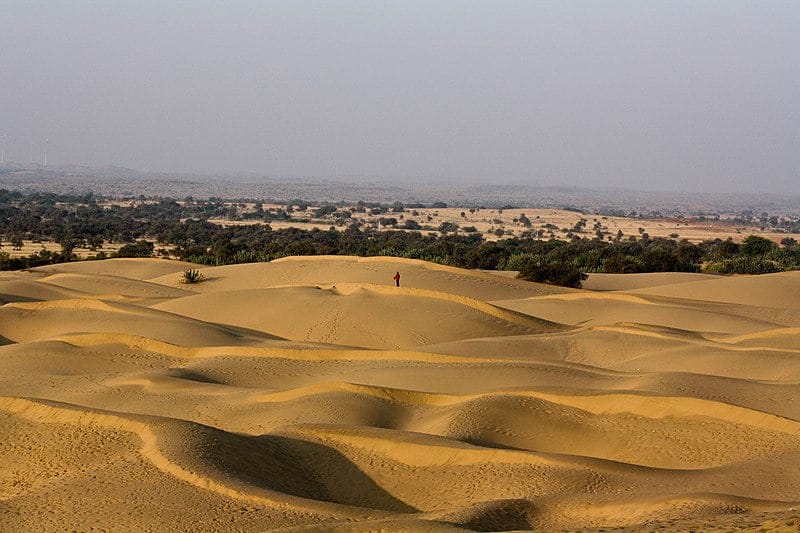
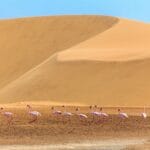
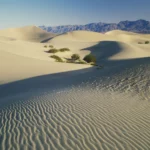
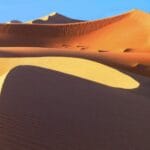


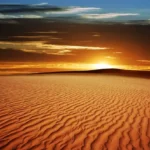






3 thoughts on “Unveiling the Gobi: Secrets of Asia’s Largest Desert”
Comments are closed.